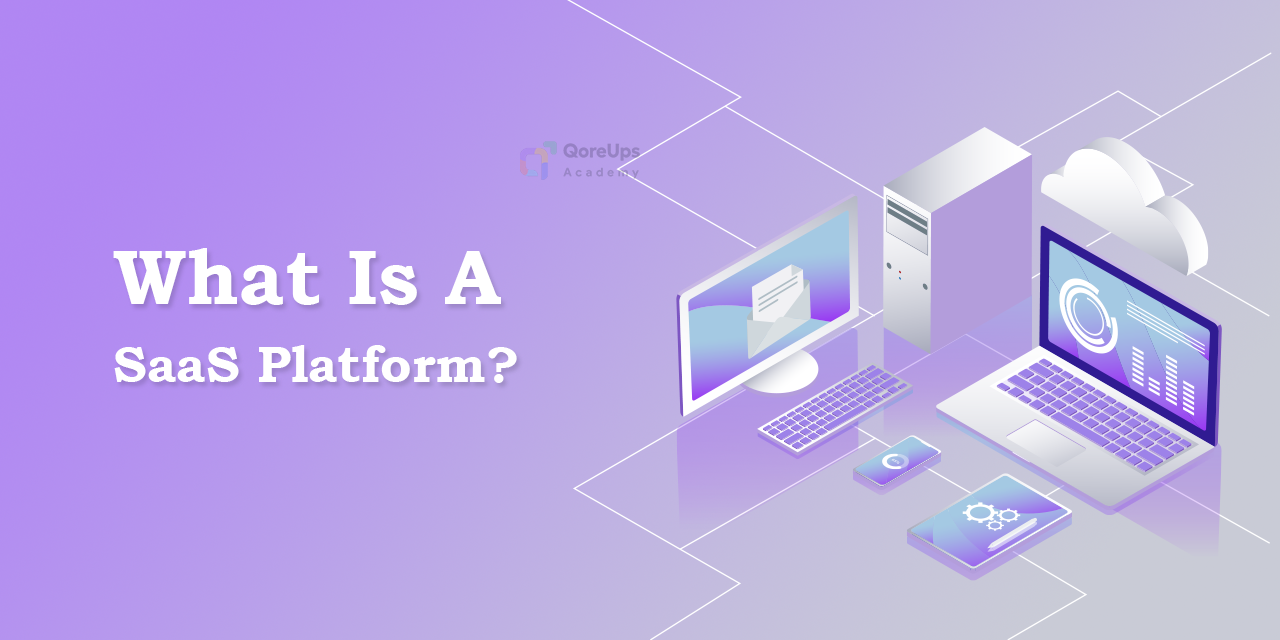The word SaaS doesn’t emerge today. But, for the past two decades, it has held a significant role.
But what is a SaaS?
SaaS stands for Software-as-a-Service. It is a cloud computing paradigm in which software applications are hosted and delivered to users via the Internet.
SaaS platforms have changed the way how a business operates and delivers a software solution.
The landscape of SaaS has evolved even more.
The evolution doesn’t stop with one factor, it evolves in every way in an aspect of new technologies, trends, and best practices in shaping the industry.
In this guide, we’ll explore everything about a SaaS platform.
So, let’s start with,
What Is A SaaS Platform?
A SaaS Platform is a digital platform tailored for the efficient distribution of software and services.
Unlike the conventional method of purchasing and installing software on separate computers or servers, users access the software via a web browser.
SaaS providers bear the responsibility for hosting, maintaining infrastructure, managing software updates, and safeguarding data security.
Key Characteristics Of SaaS Based Platform
SaaS platforms have several key characteristics that distinguish them from traditional software delivery models.
Let’s see what are they.
Subscription-Based Model
SaaS platforms are commonly provided through subscription models, requiring users to pay regular fees for software access.
This model eliminates the need for upfront software licensing fees and allows for more predictable costs.
Accessibility
SaaS platforms are accessed over the internet, usually through a web browser, making them accessible from any device with an internet connection.
This provides users with flexibility and convenience in accessing the software from anywhere.
Scalability
SaaS platforms are designed to scale easily to accommodate growing user bases or increased data volumes.
They leverage cloud infrastructure to dynamically allocate resources as needed, ensuring optimal performance.
Automatic Updates
SaaS providers handle maintenance, updates, and patches centrally, eliminating the need for users to manually install updates.
This guarantees that users consistently enjoy access to the newest features and security upgrades without any extra steps required.
Multi-Tenancy
SaaS platforms typically adopt a multi-tenant architecture, where multiple customers share the same instance of the software.
This allows for efficient resource utilization and cost-sharing, while still providing customization options for individual tenants.
Data Security and Compliance
SaaS providers are responsible for securing customer data and ensuring compliance with relevant regulations and industry standards.
They employ robust security measures such as encryption, access controls, and regular security audits to protect sensitive information.
Integration Capabilities
SaaS platforms often provide APIs and integration tools that enable seamless connectivity with other software systems and services.
This allows users to integrate the SaaS platform with their existing IT infrastructure and build custom workflows to streamline business processes.
Evolution Of SaaS Platform Companies
The origins of SaaS trace back to the application service provider (ASP) model of the 1990s, but its true advancement began in the early 2000s.
The reason behind this is high-speed internet and cloud computing technologies progressed.
B2B SaaS company like Salesforce, established in 1999, were instrumental in popularizing the SaaS model through their CRM platform.
It makes a significant milestone in its evolution.
Over time, B2B SaaS company transitioned from basic business applications to sophisticated specialized solutions.
Also, caters to diverse industries and operational needs.
The surge in cloud computing and enhanced data security measures have collectively fostered the expansion of the B2B SaaS platform.
Simultaneously, the growing demand for flexible and economical software solutions has contributed to its widespread acceptance.
Pros Of Opting SaaS Platform
- Cost Efficiency: By opting for SaaS based platform, the upfront investment in hardware and software is eliminated. Instead, users pay a subscription fee, which reduces initial costs and enables predictable budgeting.
- Scalability: SaaS platforms are built for easy scaling. Businesses can adjust user numbers, features, or capacity as needed without major infrastructure changes.
- Automatic Updates: SaaS providers centrally handle maintenance, updates, and patches, ensuring users consistently access the latest features without the need for manual installations or disruptions to workflows.
- Accessibility and Flexibility: SaaS applications are accessible from any internet-connected device, promoting remote work and facilitating collaboration among teams dispersed across various locations.
- Centralized Management: SaaS platform offers centralized data storage and management, simplifying processes and reducing the workload on individual users or IT departments.
- Rapid Deployment: SaaS based platform websites are ready for use immediately upon subscription. This swift deployment enables businesses to quickly integrate the software and begin reaping its benefits.
Cons Of Opting For SaaS Platforms
- Limited Customization: SaaS applications might not offer the same level of customization as on-premise solutions, which could be restrictive for businesses with highly specific requirements.
- Data Security Concerns: Storing data on external servers raises security concerns for some organizations. While SaaS providers implement security measures, businesses need to trust third-party services with their sensitive information.
- Subscription Costs Over Time: Although SaaS eliminates upfront costs, the cumulative subscription fees over time might surpass the initial investment of an on-premise solution, becoming a long-term expense consideration.
- Potential Downtime: SaaS platforms are vulnerable to service outages or downtime, which can disrupt business operations. While service level agreements (SLAs) may provide some assurance, downtime remains a risk to be managed.
Why Should You Opt For A SaaS Platform?
SaaS vs Traditional platform which is best? Obviously SaaS platform!
Because the SaaS platform has many advantages. Let’s see them.
- Flexibility
- Future-proofing
- Taking advantage of the cloud
SaaS Solutions Are Flexible
The biggest advantage of SaaS solutions over traditional is “Flexibility.”
Developing a Software as a Service (SaaS) platform offers the advantage of creating a minimal viable platform (MVP), enabling entrepreneurs to swiftly respond to customer feedback and generate immediate sales.
This contrasts with traditional software development, where businesses invest months or even years in building products that may ultimately lack customer interest.
With SaaS, entrepreneurs can start with a smaller initial investment.
By launching an MVP platform and gathering customer insights, they can iteratively enhance the platform while generating revenue from existing customers.
When executed effectively, SaaS development becomes self-sustaining, with the revenue generated covering development costs.
Future-Proof With A SaaS Software
Planning is crucial when building software to ensure that investments in time, money, and resources yield sustainable results.
SaaS platforms excel in facilitating continuous improvement and integration of the latest technology to maintain relevance over time.
One significant advantage of SaaS is its deployment versatility, allowing applications to be accessible across various devices with internet connectivity, including smartphones and tablets.
Once the foundational infrastructure of a SaaS platform is established, it can serve as a robust backbone for creating applications across different platforms.
Consequently, when you develop a SaaS application today, you’re investing in its longevity, ensuring its presence and usability for years to come.
SaaS Platform Takes Advantage Of The Cloud
Indeed, SaaS platforms leverage cloud computing, which essentially means that you can access this from anywhere.
The beauty of this setup lies in the fact that you’re relieved from the burden of hardware maintenance.
With cloud computing, you can redirect your focus from troubleshooting hardware issues to nurturing your business.
This model isn’t just advantageous for entrepreneurs and businesses; it’s also a boon for customers and users.
They benefit from seamless access to reliable, high-performance software solutions without being bogged down by the complexities of hardware management.
In essence, cloud-based SaaS democratizes access to cutting-edge technology, empowering both providers and users to concentrate on what matters most: driving innovation and achieving business objectives.
Finally,
And that’s a wrap! We’ve navigated through the fundamentals of the SaaS platform.
We have uncovered its significance, operational dynamics, and prospects. It’s been quite the voyage.
As the SaaS landscape continues to evolve, the key lies in fostering ingenuity and embracing fresh concepts.
Whether it’s embracing remote work, leveraging cutting-edge technologies, or prioritizing sustainability, the horizon of SaaS holds abundant promise and excitement.
So, as you embark on yourself as a top SaaS platform, may your journey be marked by tranquility.
Also, your innovations be groundbreaking, and your technological voyage be filled with smooth sailing!






